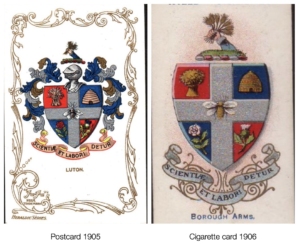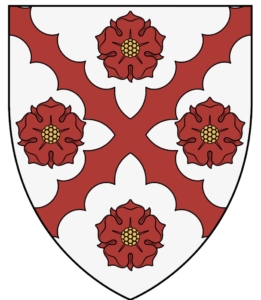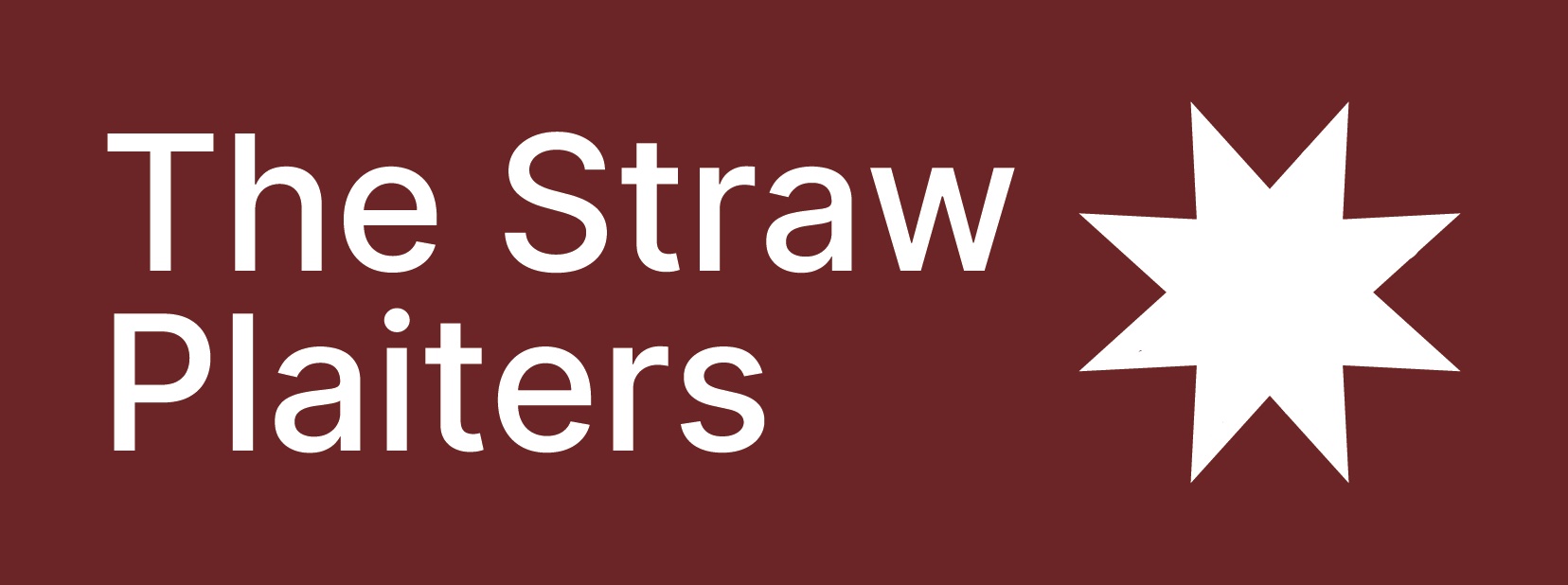Luton Coat of Arms
Two versions of the coat of arms side by side. Notice the difference?

Take a look at the bottom left quarter. The rose is red on the left and white on the right. The thistle head is mauve on the left but white on the right. Why?
Luton was incorporated into a Municipal Borough in 1876 so wards in the town had to be created, elections held and a Mayor elected. A Borough Seal also had to be created. The Luton Reporter Newspaper of the 4th March 1876 reported the arrival of the Charter in the town. It had received the Royal signature and arrived in the town by train and was read out at 1 pm on the 2nd March 1876 outside the Town Hall, Corn Exchange and Plait Halls, Cheapside. The Charter opened with the formal declaration –
“Victoria by grace of God of the United Kingdom of Great Britain and Ireland, Queen, Defender of the Faith….”
It went on to the grant the town a seal (often known as the coat of arms or town crest) –
“…the said Mayor, Aldermen, and Burgesses of the Borough of Luton and their successors, shall and may for ever hereafter have a Common Seal to serve them in transacting their business, and also shall and may use and assume armorial bearings and devices, which shall be duly entered and enrolled in the Herald’s College.”
The discussions on the Borough Seal or Town Crest as I will refer to it in this article began straight away. A letter was published in the Luton Reporter on the 11th March 1876 asking for the hat trade to play a prominent part on the town crest.

A committee of councillors was set up to design the coat of arms and their first meeting was reported at the end of June 1876. They had sought the advice of Sir Albert Woods, Garter of the Heraldic College, and established that there was no heraldic design for the town. The town was said to have been a borough previous to the time of King John, 1199, but there were no traces of any armorial designs. They decided to start with what they did know – a shield design the same as the former Lord of the Manor, the Wenlock family which had 4 quarters.
Their discussions mentioned the staple trade being introduced jointly by Mary Queen of Scots and James 1st via the Napier Family, the then owners of Luton Hoo in about 1620. The Scottish thistle was therefore put forward. The rose was to be on the town crest as a symbol of their nationality. The rose of England was obviously red as was the Napier family coat of arms, below. Then the staple trade of the town was to be represented by wheatsheaf, the beehive, the wheat ears and the bee.

The motto suggested was –
“scientiae et labori detur” – “We rise by skill and industry.”
The committee came up with 5 possible designs and sought another interview with Sir Albert Woods. The result was reported in the 1st July edition of the Luton Reporter that the coat of arms was likely to consist of –
“the Wenlock Shield, with rose, thistle, beehive, and wheatsheaf in the quaterings, and a bee in the centre, a crest being formed of an extended forearm with hand grasping a bunch of wheat ears (the latter being the arms of St. John of Wheathamsted).”
The motto was agreed and remained as stated above.
A week later the newspaper reported a change to the motto –
“A trifling alteration has been made to the motto which, however, materially affects the sense. Scientia et labori detur,” the legend, will read “scientia et labori turi,” a distinction with this difference that whereas the former is really untranslatable the latter signifies “We rise by skill and industry.”
Many thought the motto should have been in English. That was not the only dissent. The Luton Reporter editorial of 12 August 1876 complained that while “the national emblems of England, Scotland and Ireland had been incorporated with the borough crest, Wales had been left out in the cold.” I am not clear what they thought the national emblem of Ireland was – unless this is a tongue in cheek comment. I suspect the latter as they go on to talk at some length about having a leek on the town crest representing Wales.
They added that the so called link to Mary Queen of Scots was comparable to the tales of Jack and the Beanstalk, William Tell and Robin Hood so the thistle should not be incorporated into the design. It was indeed a myth so they have a point.
It seems everyone baulked at the cost of the coat of arms. The committee themselves said – “The fees of £76 10s to be paid to the Herald’s College may be considered to be simply relics of barbarism…” But the fee had to be paid if Luton were to have a coat of arms.
But there were changes. After all the advice from Sir Albert Woods of the Herald’s College and paying their huge fee, problems arose. The motto changed back to the original. More importantly, heraldic laws say that a colour cannot be placed over another colour – the red rose had therefore to be white. The thistle head had to be changed from mauve to white.
It seems that these heraldic laws gradually came to light over time and the rose and thistle were quietly changed. So the red rose representing England was changed to white thus symbolising absolutely nothing in regard to the town of Luton. However, in Christianity the white rose symbolises purity, divine love and joy and the Virgin Mary. We’ll take that.


